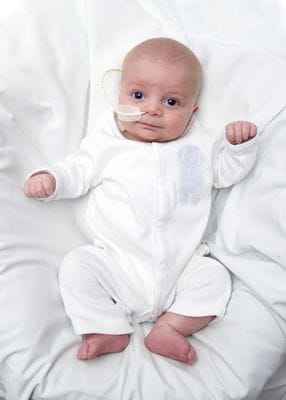
RECENT NEWS & EVENTS
Lunch in the Heart of Sydney
Rising Star Award
Team Harley - City2Surf 2017
Functional Single Ventricle (the Fontan circulation)
 The heart normally has two sides, each with a collecting chamber (atrium) and pumping chamber (ventricle). The right side of the heart collects blue (low oxygen) blood returning from the body. This blood is pumped to the lungs to collect oxygen. The left side of the heart collects pink (high oxygen) blood returning to the heart from the lungs and pumps it to the body.
The heart normally has two sides, each with a collecting chamber (atrium) and pumping chamber (ventricle). The right side of the heart collects blue (low oxygen) blood returning from the body. This blood is pumped to the lungs to collect oxygen. The left side of the heart collects pink (high oxygen) blood returning to the heart from the lungs and pumps it to the body.
In some hearts, one of the two ventricles may be underdeveloped. In this case the ventricle is considered to be functionally single (and usually receives a mixture of pink and blue blood). In general it is not possible to replace or rebuild an underdeveloped ventricle, so management is focused on making the best use of the parts of the heart that are there. The way this is done when the underdeveloped ventricle cannot be used as a pump is to create a 'Fontan Circulation', named after the person who devised the first version of the operations designed to achieve this.
The objective of a Fontan Circulation is to direct all the blue blood straight to the lungs, without going through the heart. The heart chambers (and single ventricle) are used to pump blood returning mainly from the lungs to the body. Once the Fontan Circulation is completed it allows close to normal levels of oxygen in the body to be achieved, improving well-being and considerably improving protection against certain complications such as stroke.
The end result of this surgery is not to make the heart 'normal', but to help the heart and circulation work in the most efficient way possible. Children who have had this procedure will need ongoing care and medications, and sometimes problems can develop.
The Fontan circulation is usually reached through a series of 3-4 operations spread over 4-5 years. It is only at the last stage that the best oxygen levels are achieved. Initial procedures are performed to correct certain problems (depending on the exact type of heart abnormality). A bidirectional Glenn shunt may be needed to connect the upper body vein (the superior vena cava) to the lung arteries (pulmonary artery). This may take place when the baby is a few months of age. Finally, the Fontan circulation is completed by connection of the lower body vein (inferior vena cava) to the lung artery at about 4-5 years of age.
The journey through these operations is not always smooth or successful. The chance of failure or complications varies a great deal depending on the exact heart anatomy. Your cardiologist and cardiac surgeon are really the only people who can be more specific about this. If successful, children with this type of circulatory re-arrangement can live a good quality of life but with some restrictions and an ongoing need for medical supervision. The main purpose of this explanation is to give you a very rough outline of the operations that may be needed. It is not a definite plan. The actual medical care that a child receives will always depend on the unique and specific needs of that child.
Related links:





